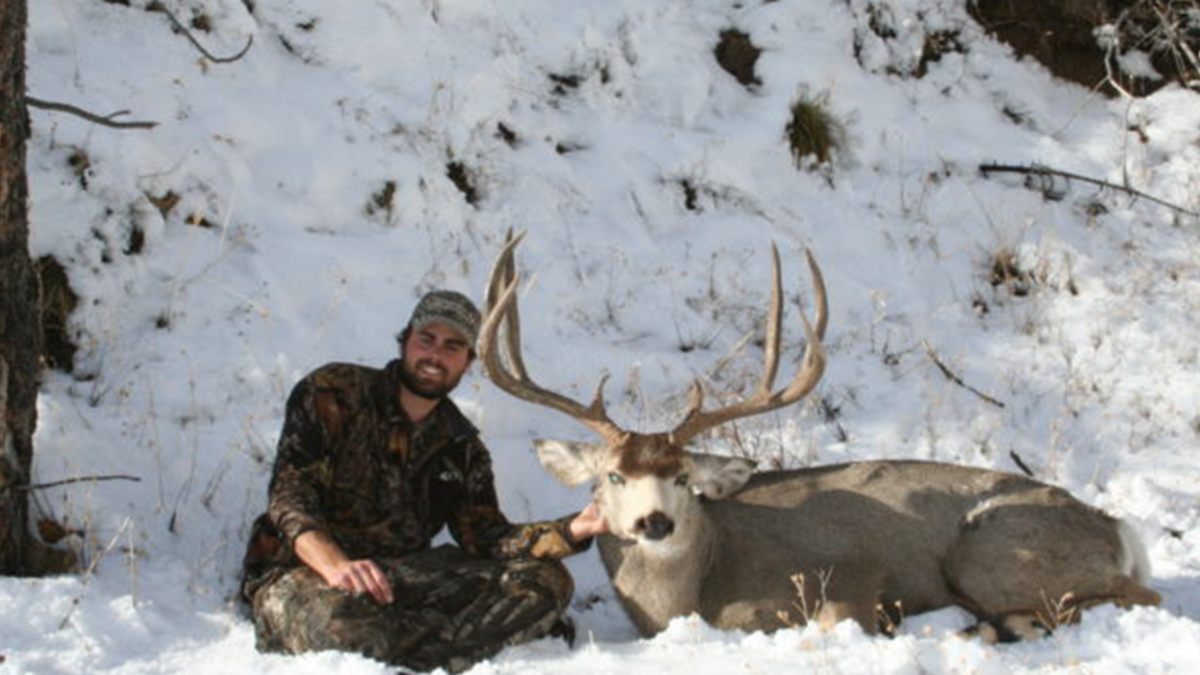Popular searches
Articles
Series
Topics
Shop
Recipes
Remi Warren, a Nevada and Montana Hunter, Weighs in With Ten Mule Deer Hunting Tips

- "The key to mule deer hunting is covering ground. Out west we have a saying, “let your eyes do the walking.” This does not mean you won’t have to put in some foot work, but the most successful mule deer hunters are ones that know how to glass. When looking for mule deer, I get steady and do an initial scan for the ones that stand out. I am generally looking for white butts. This is the easiest thing for the eye to pick up. After that I look closer, picking the hill apart for anything that looks out of place. This is where I am searching for just a piece of the deer: the lateral shape of the back, an ear, a tine, or the grey of their coat."
- "Look for magpies. Mule deer and magpies have an interesting relationship. Often you will see magpies landing on mule deer in order to pick ticks and deer lice off of them. When hunting tall sagebrush I will focus in on areas where I see a congregation of magpies. They will often sit on the tops of the sage, jump down to pick food from a bedded deer, and then jump back up. I have found a lot of deer that I would have otherwise missed by honing in on these highly visible birds."
- "Mule deer have extremely acute hearing. Their large ears allow them to pick up sounds that other species of big game would miss. This means that you have to be extra quiet. Unnatural noise is like an air raid siren to mule deer. Wear quiet clothes and refrain from talking above a whisper. If you plan on sneaking into bow range it is best to stalk in socks or barefoot. Mule deer can pick up even the slightest sound of your foot hitting the ground."
- "Mule deer live in broken terrain. After spotting one, you have to be able to navigate to the exact place where the deer was. This can be tricky for many people, because as you get closer everything looks different. Before you leave from where you spotted the deer, pick out four unique landmarks and consciously go over them in your head. I also like to pull out my digital camera and take a picture of my view from where I spotted the deer in order to use it as a reference while I stalk in."
- "During the rut mule deer can be grunted and even rattled like a whitetail. Although they are less responsive than other deer species, it still works! I have used this trick when visibility is low or the cover is heavy. Another great trick is using a fawn bleat or even a distress call. This one works best on does, but I have had bucks literally come sprinting in to see what was going on."
- "Just because you blew a stalk does not mean the game is over. Veteran mule deer hunters are always ready to give a fleeing buck a loud whistle or grunt. This often piques their curiosity and gets them to stop just long enough for a shot."
- "Before you squeeze the trigger or release an arrow, try to anticipate if the deer is going to move. If so, wait. Mule deer often flick their tails right before making a movement or taking a step. In open country, where long shots are the norm, a single step can mean the difference between a perfect shot and a miss or a non-lethal wound."
- "Just because a mule deer sees you does not mean the gig is up. Lie down or hold perfectly still. They might stare you down and burn holes through you, but if you don’t move they will often go back to their regular business. One time I had a deer stare me down for well over an hour. I laid there, unmoving, until it finally decided to walk off and bed down. I then gave it some time before stalking in for a shot. That day, I killed the biggest buck of my life."
- "You can fool their eye, you may fool their ears, but you will never fool a mule deer’s nose. The most important factor in planning a mule deer stalk is keeping the wind right. Always be mobile and never be afraid to put in a little extra effort to keep the wind in your favor. Scent control products rarely work in this type of hunting because you are always hiking and constantly sweating. You need to play the wind, or else stay home!"
- "Mule deer are pocket animals, meaning 80% of the deer live on about 10% of the land. Find where the deer like to be and focus on those areas."






Conversation